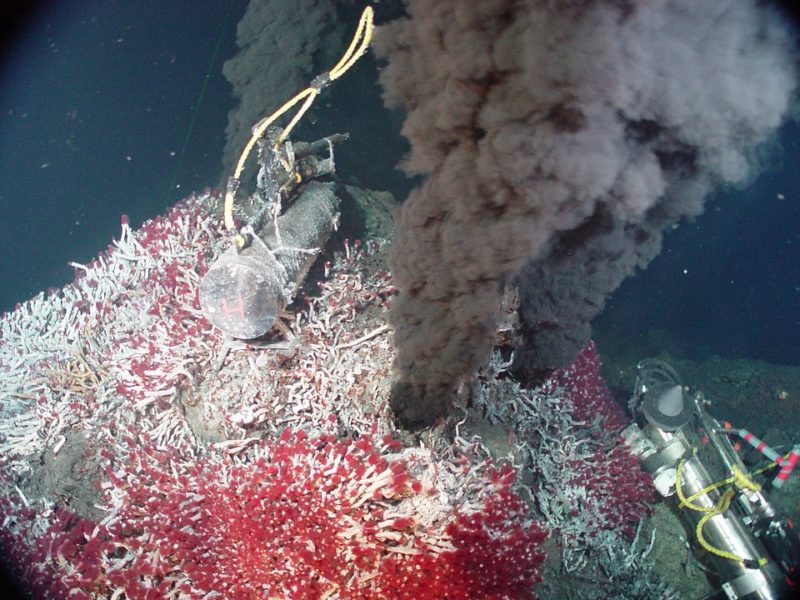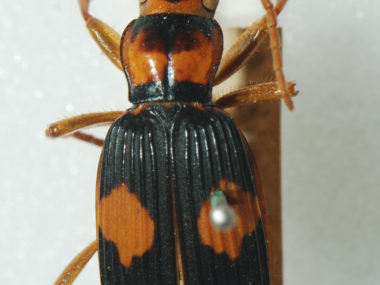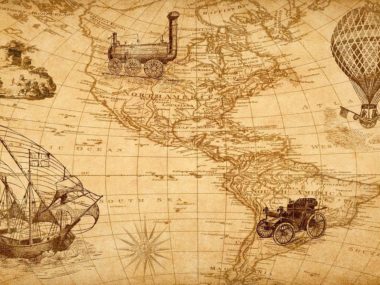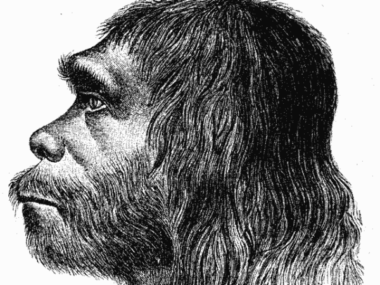The smallest creatures of God’s creation have been invisible to humans for most of human history. Most single-celled organisms (thousands of species of bacteria, protozoa, and algae) are too small to be seen without the aid of a microscope—something that was not invented until more than fifteen centuries after Christ. In fact, even for large organisms, egg cells and sperm cells are usually too small to be seen.
The following article is a from Devotional Biology: Learning to Worship the Creator of Organisms, Chapter 2.5, pgs. 55-58. The views expressed reflect those of the author, and not necessarily those of New Creation.

Image Credit: Andreas Weith – Own work, CC BY-SA 4.0, https://commons.wikimedia.org/w/index.php?curid=52452676
Consequently, until the last century and a half or so, the early stages of development were unknown for many organisms. Maggots, for example, seemed to appear on rotten meat from nothing other than the meat itself, and they seem to do this constantly and easily. Mice seemed to arise from dirty hay. Crocodiles seemed to be the products of logs rotting in water. For most of human history, humans have believed in spontaneous generation—the idea that lower life forms arose naturally from non-living material. For most of that time, few people ever considered the possibility that the idea was wrong. Since spontaneous generation is a claim about how the physical world works, spontaneous generation is an example of a ‘scientific theory’ of the past.
It was not until a series of famous experiments performed over the course of two hundred years (from the 1600’s to the 1800’s) that spontaneous generation came to be questioned, challenged, and ultimately rejected. According to spontaneous generation theory, for example, maggots spontaneously came into being on meat. This particular claim was challenged by an experiment performed by Francesco Redi (1626-1697) in 1668 [see image below, left]. Redi placed meat in each of three jars. One jar was sealed, one was covered with netting, and third jar was left open. Maggots appeared on the meat in the open jar, but not the other two.
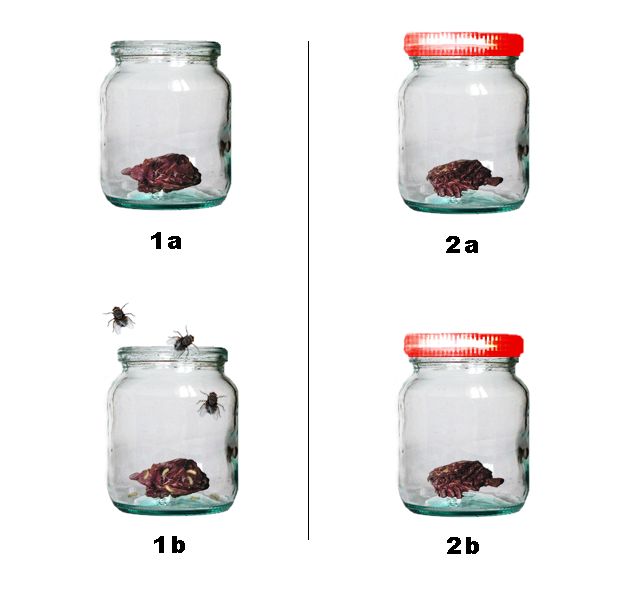
Image Credit: Aushulz – Image:Soviet mayones jar 250 ml.jpg, Image:Chuck.jpg, Image:Fly_close.jpg, Image:Museslervos.jpg, CC BY-SA 3.0, https://commons.wikimedia.org/w/index.php?curid=5446386
If spontaneous generation were true, one would expect maggots to appear in all three jars—or at the very least in the jar exposed to the air but with netting over it. It was as if maggots appear only when something in the atmosphere leaves something on the meat that was too small to be seen. In the century to follow, microscopes were developed. With the use of microscopes, humans, for the first time, could actually see the tiny eggs that flies had laid, and from which the maggots were hatched. In a similar fashion, a variety of animals and plants were found to be generated from tiny eggs, spores, or seeds of previous animals and plants.
Ironically, however, the invention of the microscope that helped challenge spontaneous generation also encouraged its continued acceptance—in a slightly different form. Using the microscope, biologists not only discovered never-before-seen parts of known organisms, they also discovered never-before seen organisms—microorganisms. Such microorganisms in a broth would be killed if the broth were boiled but would reappear in the same broth after it was allowed to cool. These microorganisms seemed to have arisen by spontaneous generation. Even if larger, more complex organisms did not arise by spontaneous generation, these microscopic organisms must have. After all, it was thought, they were so small that they could not be that complex; therefore, it must be relatively easy for them to arise spontaneously.
This modified view of spontaneous generation—that microorganisms were spontaneously generated from non-living matter—stood more or less unchallenged for nearly a century. In 1768, Lazzaro Spallanzani (1729-1799) demonstrated that if the boiled broths were left sealed, microorganisms did not reappear. Once again, it would seem that the physical world was not consistent with the theory of spontaneous generation. The experiments continued and the issue was debated for another century.
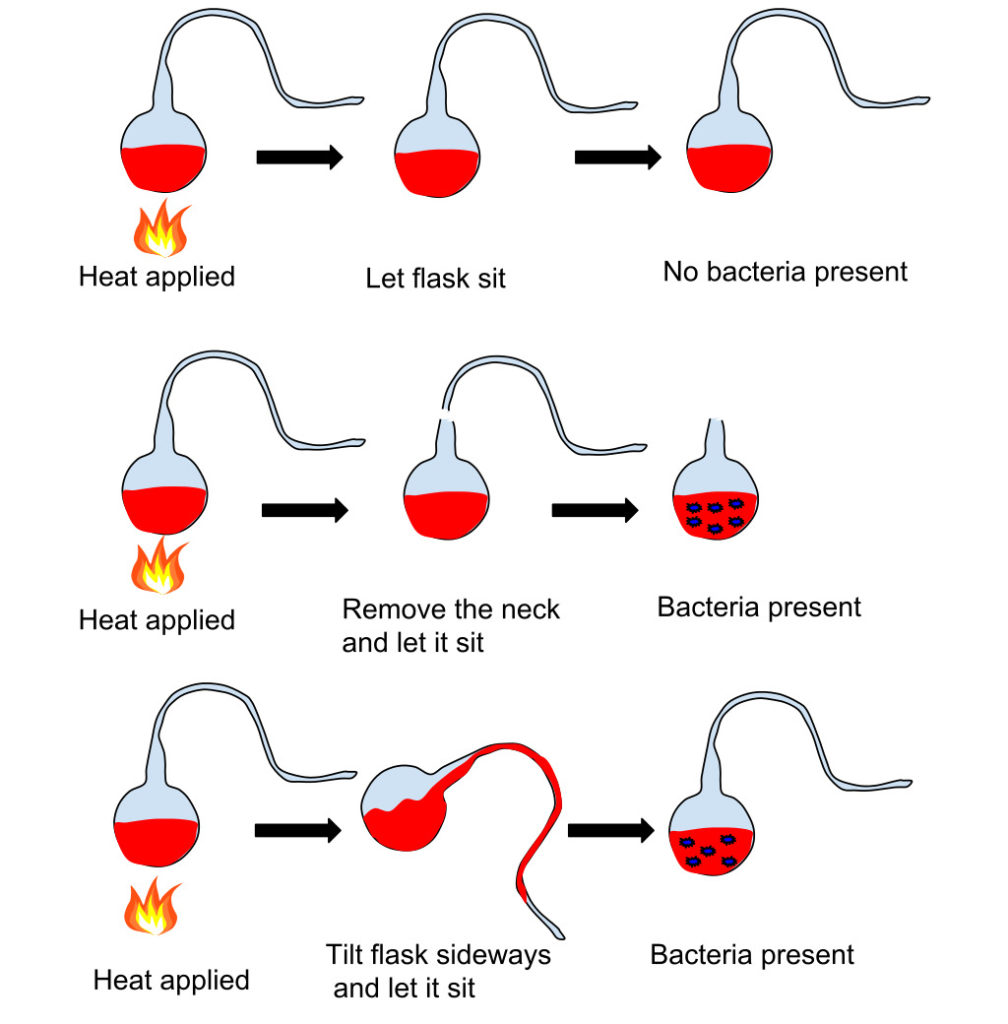
Image Credit: Kgerow16 – Own work, CC BY-SA 4.0, https://commons.wikimedia.org/w/index.php?curid=40506737
Finally, the Paris Academy of Sciences offered a prize to anyone who could settle the debate once and for all. Enter Louis Pasteur (1822-1895), who designed an experiment in 1862 that put the issue to rest [see image, left]. Pasteur boiled chemical broths in flasks with long necks. One neck was straight and the other was curved into an ‘s’ shape and he exposed both of them to the air. The curved necked flasks trapped organisms, preventing them from reaching the broth. For over a year, the boiled broth produced no organisms in the curved necked flasks until the curved necks were removed. Not long after, living organisms began growing in the broth. In a sense, the physical world had finally spoken loud enough to convince just about everyone that spontaneous generation theory was
wrong.1
If spontaneous generation was not true, what was true? It seemed instead that organisms came from other organisms. From Redi’s experiments, maggots (baby flies) appeared on meat when flies were allowed access to the meat, suggesting that baby flies came from flies. So, just as humans come from humans and lions from lions, flies came from flies. In the case of microorganisms in broth, it would seem that microorganisms appeared in broth when some sort of ‘eggs’ or ‘seeds’ of those microorganisms floating in the air have access to the broth. So, just as oak trees come from oak trees and tulips come from tulips, microorganisms come from microorganisms.
As more and more specific claims were made, scientists realized that a general principle was being discovered. This justified describing a natural law called the law of biogenesis. The law of biogenesis claims that a given type of organism only arises from another organism of the same type. In its brief form the law of biogenesis states that life only comes from life. In the century and a half or so that this law has been tested, every organism we know about seems to follow the law.2
HOW DID LIFE COME TO BE?

Image Credit: Mark Hofstetter – Own work, CC BY-SA 2.5, https://commons.wikimedia.org/w/index.php?curid=980816
The law of biogenesis is true in the present. Was the law of biogenesis also true in the past? Has life always only come from life? Biologists have never observed a contradiction to this law. They have never observed a living organism arising spontaneously from non-living things. With all their ingenuity and technology, and despite many attempts, humans have also not been able to create a living organism in the laboratory, even the simplest living organism.
Humans have not even been able to bring something back from the dead. God has resurrected a person that was dead for three days, but humans have done no such thing. People have been revived after they seemed dead for a few minutes, but humans have never brought back from the dead anything that had been truly dead—something where every cell of which it was composed was dead.3 No human has accomplished what Dr. Frankenstein did in Mary Shelley’s famous novel, nor have humans done anything approaching it. In fact, it seems that Christ purposely waited until Lazarus had been dead for several days, so that Jesus could demonstrate that Lazarus was not being revived from the appearance of death, but from death itself (John 11). The law of biogenesis would seem to be true not just of the present, but also of the past. But was it true all the way back to the origin of life itself?
Everyone seems to agree that there was a time in the past when organisms did not exist. Organisms had a beginning. According to the worldview of naturalism, the origin of the first organism must have also been the origin of life. In naturalism the first organism must have arisen from non-life. This process is called abiogenesis (Latin genesis, meaning ‘beginning’ + bios, meaning ‘life’ + a, meaning ‘not’—the beginning or origin of life from non-life). Even though it contradicts the law of biogenesis and everything we know or have reason to believe about the origin of life, the naturalist believes that abiogenesis occurred at least once in the history of life.
Another difficulty with abiogenesis is that there is no reason to believe that the physical world can generate non-physical entities. Because “you can never know for sure” in science, abiogenesis has not been proven wrong, and cannot be proven wrong (because we can never prove that it is impossible in every situation, everywhere through all time), but it seems to be contrary to things that we are fairly confident of in science.
Scripture comes to the rescue with a better explanation for the origin of life. The Bible indicates that the living God created everything (Col. 1:16), including all that has any kind of life, whether it be angels or humans, or animals or plants, or any lower form of life. Anything alive is made alive by God (Deu. 32:39; I Sam. 2:6; II Kings 5:7; Job 33:4; Acts 17:25,28). Apparently, this is even the case for individual organisms, for the ‘Spirit of God’ is described as continually creating animals (Psa. 104:29). Even resurrection from the dead is something that only God can do.
God is also the source of spiritual life (John 6:54; 10:28; 17:2-3; 20:31; Rom. 6:23; I Cor. 15:22; II Cor. 3:6; 13:4; I Tim. 1:16; I John 5:11-13). All life comes from the everliving God—the God of life. In the biblical worldview, the law of biogenesis is always true: life only comes from life. Furthermore, not only is an all-powerful God sufficient cause for life, but a non-physical God provides the kind of non-physical cause one might expect for the origin of non-physical life.
Footnotes
- Note, however, to reinforce what we said about science in Chapter 1, spontaneous generation has never been proven wrong—and never can be. We have not tested—and we cannot test—every single individual in every single species to demonstrate that every single organism in every single species did not arise spontaneously. At best we can say that every known organism we have tested properly came into existence by spontaneous generation. This might be sufficient to convince most people that spontaneous generation is wrong, but (as is the case with science in general) we cannot know for sure microorganisms. ↩︎
- Note, that, as is the case in science in general, the law of biogenesis has not been proven to be true, for it has not been tested on all organisms everywhere for all time, and it cannot be. The law of biogenesis has been shown to work in so many different cases that we may be pretty confident it is always true, but, as with any theory of science, we cannot know for sure. ↩︎
- At any given moment in time, you have trillions of living cells in your body. Each living cell possesses biological life. Each cell does not have the nephesh or biblical or spiritual life that you enjoy, but each cell possesses its own biological life. Most of the cells of your body, for example, can be taken from your body and kept alive separately. In some sense, then, your body has ‘a life of its own’, or perhaps trillions of lives of its own. When a person’s heart stops and blood stops bringing things to and from the cells that the cells need to survive, the cells of the body begin to die. How long it takes them to die depends upon many things (e.g. if the body is cold enough, cells in the body could remain alive for hours, days, or even years), but generally cells die in the matter of a few minutes. Under these circumstances, if a person is ‘resuscitated’ (i.e. the heart begins beating again and the lungs begin breathing again) before the cells of the body die, then the person’s body can recover. In such a situation, when a person is resuscitated, the person has NOT been brought back from the dead, for that person’s body had not yet died. Aside from the few cases mentioned in Scripture where God supernaturally raised a person from the dead, once the cells of a person’s body have died there is no resuscitation. Those people who claim to have ‘come back from the dead’ WERE NEVER DEAD. ↩︎

